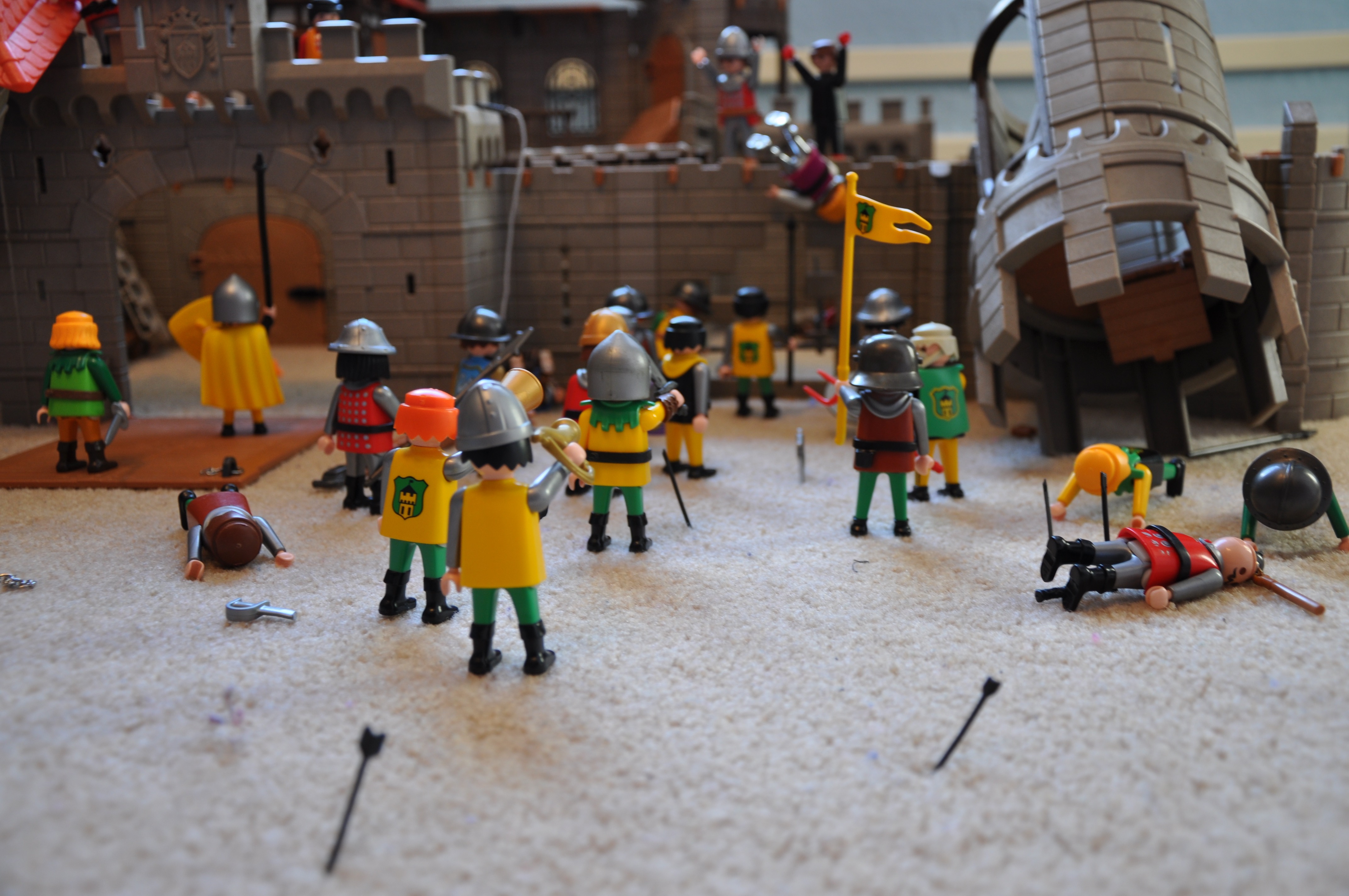Have you ever had a completely inadequate mental picture of something?
In my formative years my father believed with all his heart that he was from the Pacific Northwest. During these years he would take us on long family vacations across the western United States. On one of these trips I was told we would visit Tuscan, Arizona. And, somehow, I got it in my child mind that Tuscan, Arizona was a person—likely a mature woman with a tall, bouffant hairdo who lived in a dark, air-conditioned house with lots of colored glass and things children couldn’t touch. So, there we were, thundering across the desert on our way to see “Mrs. Arizona”.
Inadequate mental pictures are not consequential when a child. But, when we come to Christ, our picture of the kind of person he is today, right now, is very consequential. And, there’s danger in coming up with the wrong image. Ask your man on the street to describe his mental picture of the risen Christ, and you might get a description of anything from a Renaissance Christ surrounded with chubby, naked angels to a “buddy” Jesus who might hang with you, but who can’t do much to change your life, to a picture of Christ on the cross, though he isn’t anymore.
What is your mental picture of the Christ you serve?
When we turn to Matthew’s account of the resurrection, Jesus’ followers must get their minds around the Christ they’ll now serve. The Christ we now serve is powerful (:1-7).
In the setting to the account Mary Magdalene and the “other Mary”, the wife of Clopas and likely Jesus’ aunt, go to the tomb to anoint Jesus’ body. Before they arrive (the grammar suggests) there’s an earthquake. Since the New Testament records such quakes at Jesus’ death and at his future return, something enormous has taken place. They arrive to find an angel: … his appearance was like lightning, and his clothing white as snow (:3). The unbelieving guards seize up at the display of power: … for fear of him the guards trembled and became like dead men (:4). The angel instructs the women on how to respond to the power: … Do not be afraid, for I know that you seek Jesus who was crucified … Come, see the place where he lay. Then go quickly and tell his disciples that he has risen from the dead … he is going before you to Galilee; there you will see him (:5-7).
Jesus will demonstrate his power by doing what he promised (26.32). His plans will go forward, unabated. And, for all the display of power in Matthew’s account, Jesus has not yet appeared in the story! How awesome will be the power when he enters the account, we believe.
Does our mental picture of the Christ we serve include his power? And indeed, he is powerful, we must conclude. He’s powerful when we’re permitted to suffer hardship … he’s powerful. He’s powerful when we lack the will for obedience … he’s powerful. He’s powerful when we need strength to persevere … he’s powerful. And yet, there’s danger in seeing Jesus as only powerful.
The Christ we serve is also compassionate (:8-10). The women obey the angel and meet Jesus in the act of their obedience. Greetings! Jesus says (literally, “rejoice”). And, unlike the angel, Jesus permits the women to worship him. And, if it weren’t for his power, we wouldn’t recognize his compassion. Then Jesus repeats the command of the angel, Don’t be afraid … go and tell my brothers to go to Galilee, and there they will see me (:10). The disciples had all abandoned him, but Jesus speaks of them with compassion. Still, if they want to see him, they’ll likewise have to exercise belief.
And we ask, does our mental picture of the Christ we serve include his compassion? And, he is compassionate. He’s compassionate when we feel crushed by our sins, and so come to him for the thousandth time in confession … he’s compassionate. He’s compassionate when we pray for a lost or rebellious family member … he’s compassionate. He’s compassionate when we are disappointed in life, and we simply want to be with him … he’s compassionate. And yet, there’s more to the Christ we serve than his compassion.
The Christ we serve is present with his church (:16-20). The disciples do obey, and they meet Jesus in Galilee. Some doubt, perhaps more from hesitation than from unbelief. Who wouldn’t? Their new understanding of the risen Christ had to be refined and completed. Jesus instructs them: All authority in heaven and earth has been given to me (:18). He tells them what to do: Go therefore and make disciples … (:19) He tells them how to do it: … baptizing them … teaching them (:19b-20). And then, perhaps the greatest news of all! He tells them that he will be present with his church, And behold, I am with you always, to the end of the age (:20b).
Notice how Matthew ends his account, not by focusing on the disciples’ task, but by focusing on Jesus’ attributes. And notice how Matthew forms a link back to the beginning of his gospel. Way back in 1:23, Matthew introduced Jesus, Behold, a virgin shall conceive and bear a son, and they shall call his name Immanuel (which means, God with us).
Does your mental picture of the Christ you serve include his presence with the church? The Christ we serve is present with his church. He’s present when we come together on Sunday mornings to open his Word … he’s present. He’s present when one in our churches is hurting immensely … he’s present. He’s present when we surround someone who has fallen into sin and needs to be restored … he’s present.
The Christ we serve is powerful, compassion and present with his church.
We all start out with an inadequate picture of Christ. At first, we don’t know him at all. The solution for us is to recognize that we’ve missed the mark and run from him all our lives. Then, we understand that Jesus came for us, and those like us, to take our rebellion on himself and die, conquering sin and death. And then, we trust him by faith, transferring the dependence of our lives from ourselves to him. Only then do we begin to have an accurate picture of the Christ we serve.
This Easter we’ll gather. “Christ is risen!” someone will say. And then, we’ll respond, “He’s powerful. He’s compassionate. He’s present with his church. And, he is risen indeed!”
















